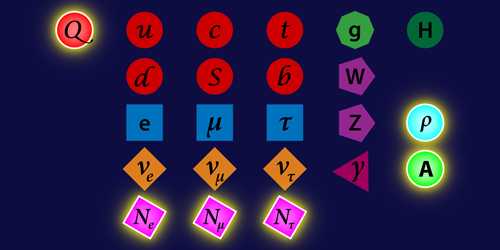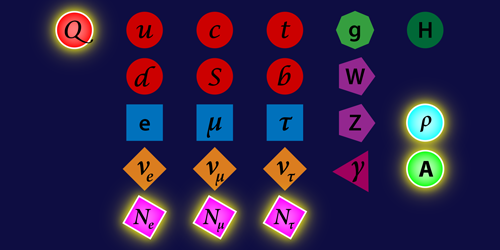Model Tries to Solve Five Physics Problems at Once
The standard model has enjoyed a happy life. Ever since it was proposed four decades ago, it has passed all particle physics tests with flying colors. But it has several sticky problems. For instance, it doesn’t explain why there’s more matter than antimatter in the cosmos. A quartet of theorists from Europe has now taken a stab at solving five of these problems in one go. The solution is a model dubbed SMASH, which extends the standard model in a minimal fashion.
SMASH adds six new particles to the seventeen fundamental particles of the standard model. The particles are three heavy right-handed neutrinos, a color triplet fermion, a particle called rho that both gives mass to the right-handed neutrinos and drives cosmic inflation together with the Higgs boson, and an axion, which is a promising dark matter candidate. With these six particles, SMASH does five things: produces the matter–antimatter imbalance in the Universe; creates the mysterious tiny masses of the known left-handed neutrinos; explains an unusual symmetry of the strong interaction that binds quarks in nuclei; accounts for the origin of dark matter; and explains inflation.
The jury is out on whether the model will fly. For one thing, it doesn’t tackle the so-called hierarchy problem and the cosmological constant problem. On the plus side, it makes clear predictions, which the authors say can be tested with future data from observations of the cosmic microwave background and from experiments searching for axions. One prediction is that axions should have a mass between 50 and 200 eV. Over to the experimentalists, then.
This research is published in Physical Review Letters.
–Ana Lopes
Ana Lopes is a Senior Editor of Physics.





